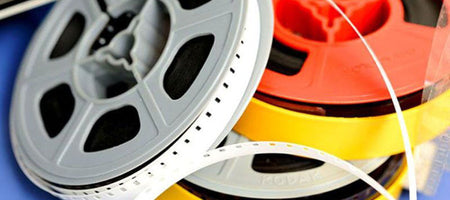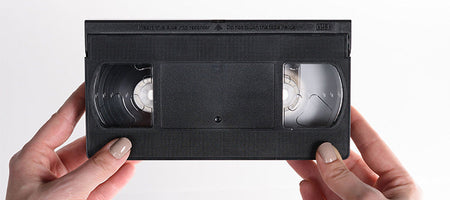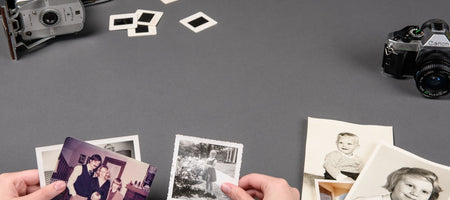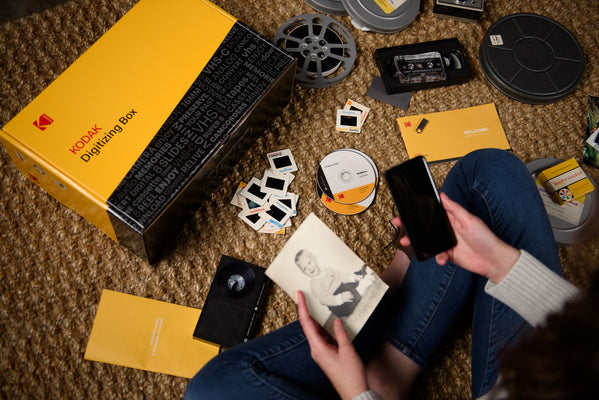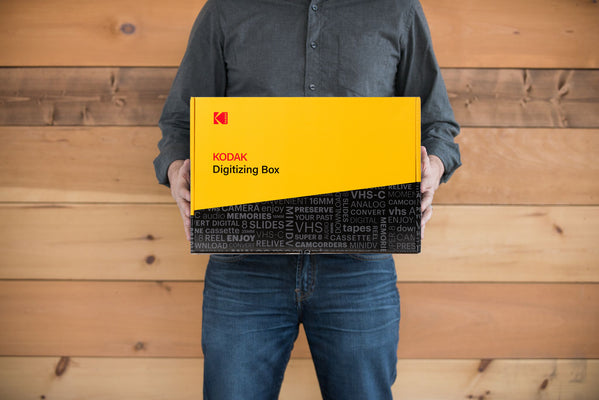Long before Blu-ray, prior to DVDs and VHS tapes, even 8mm, movies and film were shot on 16mm film.
And while movie houses and production companies were still pumping out 35mm format film, the innovative introduction of 16mm became the new standard for amateur film makers for a number of reasons.
So let’s travel back to the Golden age and learn all about 16mm film and why it has a special place in cinema history.
The birth of 16mm
In 1923, Eastman Kodak (that’s us!) introduced the first commercially successful amateur movie camera in America, the Cine-Kodak. And while the machine was a technological triumph at the time, the real innovation wasn’t the machine itself, but the the actual film it used – 16mm. This more economical and smaller film format was an amazing amateur alternative designed for affordability and portability.
The significance of 16mm film
Upon its inception into the industry, 16mm film’s size and economic value was only further enhanced by its chemical makeup. The new film consisted of a base of non-combustible acetate plastic, a much safer alternative to the dangerously flammable cellulose nitrate used in 35mm. In fact, this safety measure was so prevalent that it helped earn 16mm film the name “safety film.”
Furthermore, 16mm film didn’t create negatives during filming – only the positive camera original. This was monumental because it allowed amateurs and filmmaker hobbyists the ease and convenience of producing films without the time-consuming, two-step process of creating a negative and then printing a positive from it. For the first time ever, the process was as fairly simple as point and shoot.
For decades, 16mm film would continue to be used in homes and classrooms around the country thanks to its mobility, affordability and safety features.
Along comes a challenger – 8mm
Just like most technology, new challengers are always waiting on the sidelines ready to take the technological crown. For 16mm, that usurper was 8mm film, which hit the scene in 1932. It boasted an even smaller film size (and as a result smaller cameras) and a cheaper price tag. In fact, when Super 8 later rolled out, the film was marketed as being so easy a kid could use it. Super 8 was the camera and film format for family home videos, and the magnetic audio track synchronization when shooting was a major breakthrough for the home film industry.
By the time the late 30s were here, Kodachrome (us again!) color reversal film for 16mm and 8mm helped bring color cinematography into family’s homes across the country. Now families could enjoy full color and audio in their home videos! And while 16mm film continued to be used by amateur filmmakers, schools and documentarians, the emergence of Super 8 was what really started the decline of the 16mm format.
But if you are sitting on a stockpile of old 16mm film, it’s not too late to turn that rubble of fading film into forever memories. We can help you digitize your old film reels, tapes, photos and audio cassettes, so you and your loved ones can relive those golden-aged memories time after time. And who knows, you may even have audio stored on some of those vintage reels that you never knew about.

